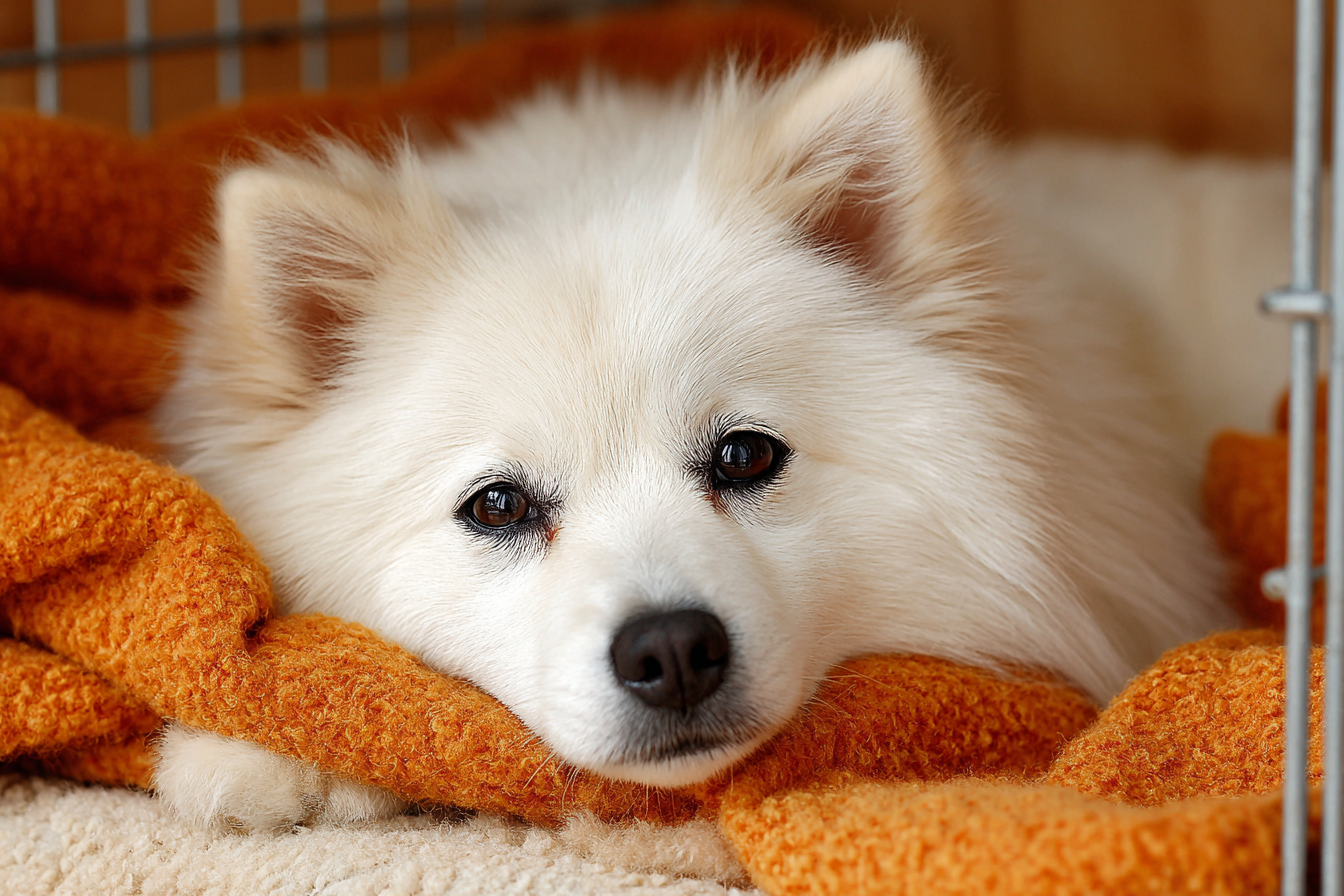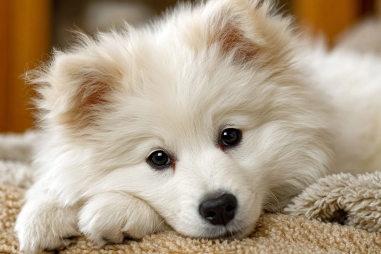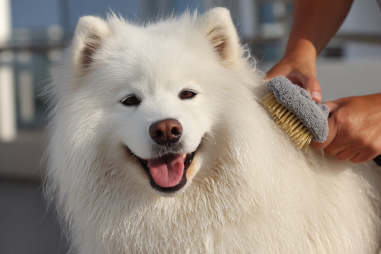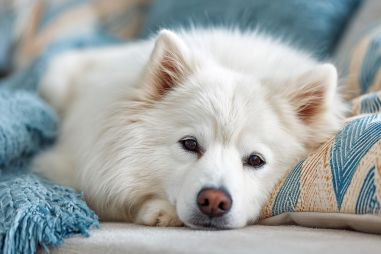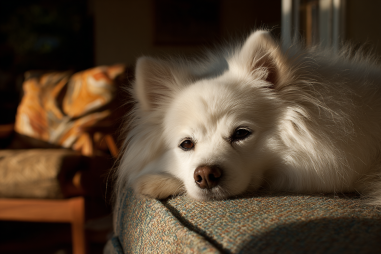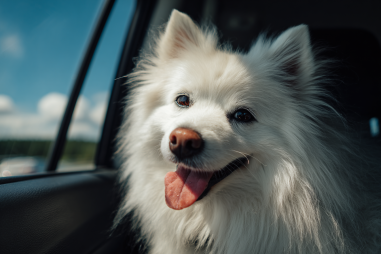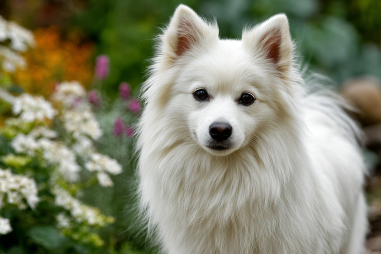Crate training is an invaluable tool for American Eskimo Dog owners, providing a comfortable and secure space that becomes a haven for your furry friend. This adorable and intelligent breed thrives on routine, and a crate can offer structure while also giving your dog a private retreat. Whether you have a playful puppy or an adult dog, crate training can help with behavior, safety, and even travel. Let’s explore effective tips and strategies for making crate training a positive and stress-free experience for both you and your American Eskimo Dog.
Benefits of Crate Training
Crate training offers a multitude of benefits that go beyond just giving your dog a place to rest. For American Eskimo Dogs, who are known for their intelligence and strong attachment to their family, a crate helps in several key ways:
- Safety: A crate confines your dog safely when you can’t supervise them, preventing destructive behavior or potential accidents.
- Potty Training: Dogs naturally avoid soiling their sleeping area, which accelerates housebreaking and helps regulate bathroom habits.
- Comfort and Security: Crates mimic a den-like environment, providing a quiet, cozy spot where your dog can relax and decompress.
- Travel Ease: Traveling becomes much easier with a crate-trained dog, making car rides and vet visits less stressful.
- Managing Separation Anxiety: When used correctly, a crate can reduce anxiety by establishing a calm, familiar space.
All these benefits together make crate training a highly recommended practice for American Eskimo Dog owners.
Choosing the Right Crate for Your Dog
Selecting the perfect crate is the first step toward a successful training experience. Here are some factors to keep in mind when choosing a crate for your American Eskimo Dog:
- Size: The crate should be large enough for your dog to stand up, turn around, and lie down comfortably, but not so big that it encourages them to use one corner as a bathroom.
- Material: Wire crates are popular for their ventilation and visibility, while plastic crates offer a cozier feel and are great for travel.
- Portability: If you travel often or want something lightweight, consider a foldable wire crate or a soft-sided one designed for dogs.
- Durability: American Eskimo Dogs are energetic and curious, so choose a crate sturdy enough to withstand scratching or chewing behavior.
Measure your dog before buying and consider their adult size if you have a puppy. A well-chosen crate lays the foundation for positive training.
Introducing the Crate Gradually
Diving headfirst into crate confinement can be overwhelming or scary for your American Eskimo Dog, so it’s important to introduce the crate slowly and gently to build trust. Here’s how to get started:
- Place the crate in a familiar area: Choose a quiet corner of your living room or family area where your dog likes to hang out.
- Make the crate inviting: Keep the door open initially and toss in treats, toys, and bedding to encourage voluntary exploration.
- Feed meals in the crate: Offering breakfast or dinner inside the crate creates positive associations around this new space.
- Short, positive visits: Encourage your dog to enter and exit freely without forcing them, rewarding every step inside.
- Close the door gradually: When your dog feels comfortable entering the crate, try closing the door for short intervals and slowly extend the time.
Patience is key during the introduction phase, especially with the sensitive and intelligent American Eskimo Dog.
Making the Crate Comfortable
Once your dog is familiar with the crate, create an environment that feels warm and welcoming. A cozy crate encourages your American Eskimo Dog to view it as their personal sanctuary. Consider these comfort ideas:
- Soft bedding: Use plush cushions or a soft dog bed made of washable materials to offer comfort and insulation.
- Favorite toys: Place your dog’s beloved toys inside for entertainment and reassurance.
- Appropriate temperature: Make sure the crate is positioned away from drafts or excessive sunlight, maintaining a comfortable climate.
- Covering the crate: A lightweight cover or blanket draped over the top can create a den-like feel while still ensuring adequate airflow.
By considering your dog’s physical comfort, the crate transforms from a simple enclosure to a happy, restful space.
Encouraging Positive Crate Associations
The key to successful crate training is making the crate a place your American Eskimo Dog loves rather than fears. Encourage positive associations with these techniques:
- Treat rewards: Use tasty treats to reward your dog whenever they enter or spend time in the crate.
- Use a calm tone: Always speak in a gentle, encouraging voice when guiding your dog into the crate.
- Interactive toys: Puzzle feeders or long-lasting chew toys inside the crate can engage your dog for longer bouts.
- Avoid using the crate as punishment: Never send your dog to the crate when they are in trouble, as it will create negative feelings.
With consistent positive reinforcement, your American Eskimo Dog will begin to see the crate as a safe and enjoyable retreat.
Handling Common Issues During Training
Despite your best efforts, you may encounter some challenges along the way. Here are common crate training issues and how to handle them effectively:
- Whining or barking: Young Eskies may vocalize when first crate trained. Avoid opening the door immediately to prevent reinforcing this behavior. Wait for quiet moments before letting them out.
- Refusal to enter crate: Revisit gradual introduction steps and increase treats or toys. Never force your dog inside the crate.
- Chewing inside the crate: Provide durable toys or bone chews. Ensure boredom isn’t the cause by increasing exercise outside the crate.
- Potties inside the crate: Check crate size and make sure it’s not too large. Often more frequent bathroom breaks are needed, especially for puppies.
- Separation anxiety: Gradually increase crate time and accompany with calming routines like soothing music or pheromone sprays.
Addressing problems patiently helps build trust and creates a successful crate training experience.
Crate Training for Puppies and Adults
Whether you’re starting with a playful American Eskimo puppy or an adult dog new to crates, training methods should be adapted accordingly:
Puppies
Puppies have smaller bladders and require more frequent potty breaks. Keep crate sessions short initially, and crate your puppy overnight to promote good sleeping habits. Puppies also learn fast, so consistent schedules help them understand expectations quicker.
Adults
Adult dogs might have pre-existing fears or bad associations with crates. Patience is even more crucial here. Start slowly, maintain positive reinforcement, and provide plenty of encouragement. It’s never too late to crate train an adult American Eskimo Dog, but progress may take more time.
Both puppies and adults benefit from routine and a calm atmosphere, so always maintain a positive attitude when training.
Crate training your American Eskimo Dog offers a valuable way to keep them safe, comfortable, and well-behaved. By choosing the right crate, introducing it gradually, making it cozy, and encouraging positive associations, you can make crate training a pleasant experience. Remember that patience and consistency are key, whether your dog is a playful puppy or a mature adult. With these effective tips, your American Eskimo Dog will quickly adapt to their cozy crate and enjoy having their own special space in your home.

